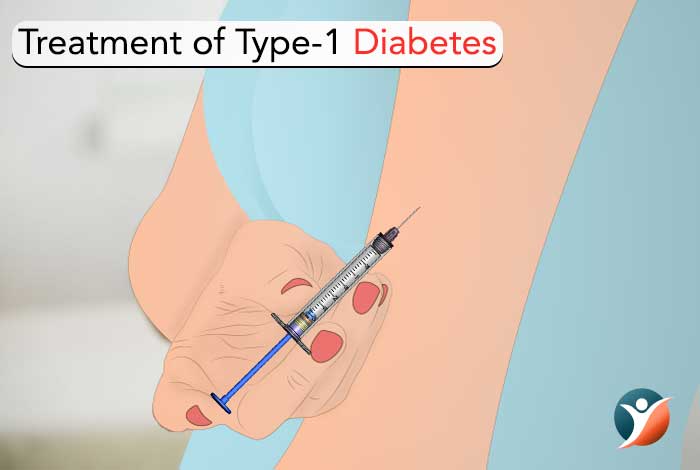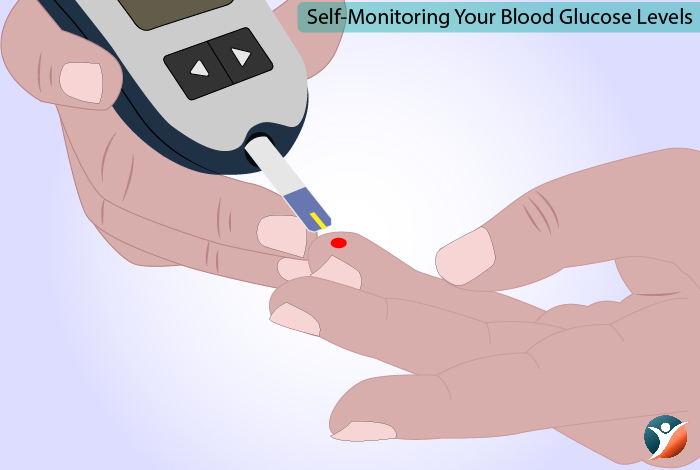
Diabetes Mellitus, which is commonly known as diabetes, is a life-long condition and an intimidating one. Unfortunately, it cannot be permanently treated but can be both prevented and effectively managed. Your lifestyle choices, family history, age and various other factors can contribute to diabetes development. Insatiable thirst and frequent urination might indicate that you have developed diabetes. Thankfully, diabetes mellitus can be efficiently managed by implementing certain lifestyle changes and if required, medications. Our comprehensive guide covers all the necessary information about diabetes including its symptoms, causes, diagnosis, treatment, risk factors and various other crucial details. Read on to know everything about diabetes mellitus.
Table of contents
- What is Diabetes Mellitus?
- Difference between Diabetes Mellitus and Diabetes Insipidus
- Types and Symptoms of Diabetes Mellitus
- Causes of Diabetes Mellitus
- Diagnosis of Diabetes Mellitus
- Treatment of Diabetes Mellitus
- What to Eat and What to Avoid in Diabetes
- Self-monitoring of blood glucose levels
- Risk Factors for Diabetes Mellitus
- Prevention of Diabetes Mellitus
- Diabetes Complications
- Diabetes in children and teens
- Famous Diabetics
- Statistics and Facts on Diabetes
- Conclusion
What is Diabetes Mellitus?

Diabetes Mellitus, which is most commonly known as diabetes, is a group of metabolic disorders wherein a person has high blood sugar levels. Our pancreas releases a hormone known as insulin which helps the body cells to take up sugar from bloodstream for energy. This is how insulin helps in reducing blood sugar levels. Now, diabetes can be either due to inadequate insulin production or because the body cells do not respond to insulin properly or both. People with high blood glucose levels generally experience frequent urination (polyuria) and excessive thirst (polydipsia). They will also become increasingly hungry (polyphagia).
Difference between Diabetes Mellitus and Diabetes Insipidus
To understand the basic differences between diabetes mellitus and diabetes insipidus, we have prepared a chart to highlight the differences. Take a look.
| Attributes/Types | Diabetes Mellitus | Diabetes Insipidus |
| Glucose Levels | Blood glucose levels are high | Blood glucose levels are normal but excess water is lost |
| Hormone Involved | Insulin | Antidiuretic hormone (ADH) or vasopressin |
| Related Gland | Pancreas | Pituitary Gland |
| More Common Diabetes | Diabetes Mellitus is more common | Diabetes Insipidus is less common |
| Symptoms | Patients feels hungry due to loss of glucose | Patients feel thirsty due to excessive fluid loss and frequent urination |
We believe this chart would help you in clearly distinguishing between both types of diabetes that have almost similar symptoms but occur due to different causes altogether. Let’s get straight into the types of diabetes mellitus and their symptoms.
Types and Symptoms of Diabetes Mellitus
Broadly, diabetes mellitus can be classified into three major types: Type-1, type-2 and gestational diabetes.
1. Type-1 Diabetes
2. Type-2 Diabetes
3. Gestational Diabetes
But before we go on discussing about these three types of diabetes, let us understand what Prediabetes is. If your doctor categorizes you under prediabetes, you have higher than normal blood sugar levels but they are still not high enough to be categorized as diabetes. If left untreated, it can gradually progress to type-2 diabetes, stroke or heart diseases. Your doctor might also refer to prediabetes as impaired glucose tolerance (IGT), insulin resistance or impaired fasting glucose (IFG). Prediabetes does not have any clear symptoms but other health conditions that are associated with insulin resistance might be experienced. These include acanthosis nigricans, which is development of thick, dark and velvety skin patches. This skin discoloration generally occurs around:
- Elbows
- Knuckles
- Knees
- Armpits
- Neck
Treatment of prediabetes includes lifestyle modifications, such as changes in diet and exercise.
Let’s learn about the types of diabetes and their symptoms:
Type-1 Diabetes:
Type-1 diabetes is an autoimmune disease which generally affects children and juveniles. This is also known as ‘Juvenile diabetes’ or ‘Insulin-dependent diabetes’. In type-1 diabetes, the body starts destroying its own insulin-producing beta cells. As a result, little or no insulin is produced. In the absence of insulin, body cells actually starve for sugar while so much sugar is accumulated in the bloodstream. Around 10% of total diabetes cases are of type-1 diabetes. If left untreated, this condition can lead to myriad of health complications including death.
Symptoms of Type-1 Diabetes:
Type 1 diabetes symptoms can appear suddenly and might include:
- Increased thirst
- Bed-wetting in children who are toilet-trained
- Frequent urination
- Extreme hunger
- Unexpected weight loss
- Irritability and other mood changes
- Fatigue and tiredness
- Blurred vision
Type-2 Diabetes:
Type-2 diabetes is the most common type of diabetes wherein body can’t regulate blood glucose effectively. The body cells become resistant to the insulin due to which they cannot utilize glucose. The demand for insulin increases to facilitate glucose’s entry into the cells, while high levels of glucose remain in the bloodstream. Gradually, the cells require increasingly more amount of insulin, which the pancreas fails to produce eventually.
Symptoms of Type-2 diabetes:

The most common signs and symptoms of type 2 diabetes include:
- Excessive thirst
- Frequent urination, especially at night
- Fatigue
- Excessive hunger
- Sores or cuts that take too much time to heal
- Blurry vision
Gestational Diabetes:
Gestational diabetes is a type of diabetes, that develops during pregnancy. It causes increased levels of glucose in the bloodstream, which can somehow affect the pregnancy and the fetus. The blood sugar levels generally return to normal after the delivery. Having gestational diabetes in pregnancy increases the mother’s risk of developing Type-2 diabetes mellitus later in life. The new-born baby is also at an increased risk of developing low blood sugar levels, immediately after birth.
Symptoms of Gestational Diabetes:

Gestational diabetes does not cause any apparent symptoms in most of the pregnant women. The primary health caregivers would evaluate the pregnant woman’s risk of developing gestational diabetes. In rare cases, when gestational diabetes is out of control, one may notice the below-mentioned symptoms.
- Feeling more thirsty
- Frequent hunger
- Frequently urinating
Read on to know about the causes of diabetes.
Causes of Diabetes Mellitus
Diabetes can be caused due to various factors including your family history, genetic makeup, ethnicity, overall health and environmental factors. Generally, the causes of diabetes depend largely on the type of diabetes developed and age of the individual.
Causes of Prediabetes:
In prediabetes, the body cells become resistant to the insulin and gradually pancreas is unable to produce enough insulin to overcome this resistance. Instead of moving into the body cells where it’s needed for energy, sugar accumulates in the bloodstream.
Causes of Type-1 Diabetes:
Type-1 Diabetes Mellitus is caused when the body’s immune system starts destroying its own insulin-producing cells. This leaves the body with little or no insulin to work properly. While, there are no specific causes that lead to type-1 diabetes, but the below-mentioned causes might be majorly involved in its development.
- Consumption of certain chemical toxins
- Bacterial or viral infection
- An unidentified component that is initiating an autoimmune response
- Genetic predisposition to type-1 diabetes due to family history
Causes of Type-2 Diabetes:
Usually, type-2 diabetes is caused by multiple factors including lifestyle choices. The causes of type-2 diabetes include the following:
- Family history of type-2 diabetes
- Leading a sedentary lifestyle
- Increasing age
- Serious illness
- Obesity
- Poor eating habits
- Pregnancy
Causes of Gestational Diabetes:
The causes of gestational diabetes are still unknown but few factors might increase your risk of developing it.
- Being overweight or obese before conceiving
- Family history of gestational diabetes
- Having Polycystic Ovarian Syndrome (PCOS)
- Certain races including Asian, Hispanics, American Indians and Black are at increased risk of developing gestational diabetes.
- Delivering a healthier baby weighing around 9 pounds
All these causes can possibly lead to diabetes development.
Other Causes of Diabetes:
A plethora of other causes might also lead to diabetes development. These include:
- Pancreatitis: Inflammation in the pancreas can lead to diabetes. Pancreatectomy can also cause diabetes.
- Polycystic Ovary Syndrome (PCOS): PCOS which is primarily caused by obesity-linked insulin resistance, can also result in diabetes development or pre-diabetes.
- Cushing’s syndrome: This syndrome increases the levels of stress hormone cortisol and eventually blood glucose levels. Abundance of this hormone can lead to diabetes.
- Glucagonoma: Glucagonoma is characterized by lack of equilibrium between production of glucagon and insulin. This condition might also result in diabetes.
- Steroid-Induced Diabetes: Steroid diabetes or steroid-induced diabetes is a rare form of diabetes that is caused by long-term use of glucocorticoids.
- Sedentary Lifestyle and Being Overweight: The more weight or precisely fatty tissues you have, the more you are prone to develop diabetes mellitus. Also, the less physical activities you indulge in, the more you are at risk of developing diabetes.
- Ethnicity: Certain races including Hispanics, Black people, Asian-Americans, American Indians are more prone to develop diabetes mellitus. The reason is still unclear.
- Having High Blood Pressure: If your blood pressure is over 140/90 millimeters of mercury (mm Hg), you are at an increased risk of type-2 diabetes.
- Having low levels of HDL: If you have low levels of “good,” cholesterol or high-density lipoprotein (HDL) are low, you might develop type-2 diabetes. Similarly, people with higher levels of triglycerides might also develop type-2 diabetes.
Now, let’s discuss the diagnosis of diabetes mellitus.
Diagnosis of Diabetes Mellitus
To diagnose diabetes, your doctor might conduct the following tests:
Glycated Hemoglobin (HbA1C) Test:
This blood test doesn’t require any fasting. It indicates your average blood sugar level for a period of three months. HbA1C measures the percentage of blood sugar that is attached to hemoglobin. Hemoglobin is the oxygen-carrying protein present in red blood cells. The higher your blood glucose levels are, the more hemoglobin will have sugar attached to it.
| Diagnosis | HbA1C level |
| Normal | Below 5.7% |
| Prediabetes | Between 5.7% and 6.4% |
| Diabetes | 6.5% and above |
If your HbA1C test results are not consistent, the test isn’t available or you have certain health conditions that can make this test inaccurate — like you’re pregnant or have a rare form of hemoglobin; your doctor might also conduct the below-mentioned tests to diagnose diabetes.
Random Blood Sugar Test:
Your blood sample will be collected at a random time. Irrespective of when you had your last meal, a random blood sugar level of 200 (mg/dL) (milligrams per deciliter) or 11.1 mmol/L (millimoles per liter) or higher indicates diabetes.
Fasting blood sugar test:
Your blood sample will be collected after an overnight fast.
| Diagnosis | Plasma Glucose Result (mg/dL) |
| Normal | 99 and below |
| Prediabetes | 100 – 125 |
| Diabetes | 126 and above |
If your plasma glucose level is higher than 126 mg/dL, it indicates you have diabetes. The test might be repeated next day for confirmation.
Oral Glucose Tolerance Test:
For this test, you need to fast overnight and your fasting blood sugar level will be checked initially. Then you are made to drink a sugary liquid and your blood sugar levels are checked periodically for next two hours.
| Diagnosis | Plasma Glucose Result (mg/dL) |
| Normal | 139 and below |
| Prediabetes | 140 – 199 |
| Diabetes | 200 and above |
Your urine will be tested to check for the presence of a byproduct which is produced when fat and muscle tissue are consumed for energy as the body doesn’t have adequate insulin to use available glucose. Your doctor might also check for presence of autoantibodies.
Tests for gestational diabetes:
Your doctor might evaluate your risk factors for gestational diabetes, early in your pregnancy:
-
- If you are at higher risk of gestational diabetes: If you were obese before pregnancy, you suffered from gestational diabetes during previous pregnancy; or you have a family history of diabetes; your doctor might conduct tests to check for gestational diabetes in your first prenatal visit.
- If you are at average risk of gestational diabetes: Your doctor might conduct screening test for gestational diabetes during your second trimester, generally between 24 and 28 weeks of pregnancy.
Treatment of Diabetes Mellitus
The main aim of treating diabetes is to keep your blood glucose level strictly within the normal range and to prevent any health complications due to diabetes.
Medications may help in managing diabetes. There are various types of medicines for managing blood glucose levels in diabetic patients. All these medications have a specific mechanism of action to manage blood sugar levels. The method of administration of these medications also varies. Few medications are taken orally while few are taken in form of injections. Most of the available medicines are for the management of type-2 diabetes, but a few medications such as metformin are taken along with insulin to effectively manage type-1 diabetes.
I) Treatment of Prediabetes:
Treating prediabetes is simple, it often just requires a few lifestyle changes and losing weight.
- Eat Healthy: Make sure to eat healthy while getting all the adequate nutrients from your diet.
- Lose Weight: Losing around 5% to 10% of your weight can actually help you in treating pre-diabetes.
- Exercise: Indulge in any physical exercise that you enjoy such as swimming or walking. Try to work out at least 30 minutes per session, 5 times a week. You can begin with less time and gradually increase your time.
- Quit smoking: Smoking might make you more vulnerable to type-2 diabetes.
- Keep Your Blood Pressure And Cholesterol Levels Under Check: Manage your high blood pressure and high cholesterol.
ii) Treatment of Type-1 Diabetes:

Patients who develop type-1 diabetes are required to take insulin throughout their lives. Generally, type-1 diabetics require minimum two insulin doses each day or as is recommended by their doctors. Your doctor or diabetes educator will figure out normal blood glucose range for you considering your age, type of diabetes and overall health.
Type-1 diabetes treatment can be summarized below:
- Insulin administration
- Keeping a check on your fat, carbohydrate and protein intake
- Regular monitoring of your blood sugar levels
- Consuming healthy foods
- Regular physical activity
- Maintaining healthy weight
1. Insulin Therapy: You may require any one of below-mentioned types of insulin, as your doctor recommends:
- Short-acting insulin
- Intermediate-acting insulin
- Rapid-acting insulin
- Long-acting insulin
2. Administration of Insulin:
Insulin cannot be administered orally, so it requires to be administered through injections or an insulin pump.
3. Insulin Injections:
A fine syringe or insulin pen can be used to administer insulin under the skin. Also, insulin pens are available that can be either disposed off or refilled. A mixture of different insulin types can be administered this way. A daily regimen of taking three or more insulin injections each day has shown to effectively manage type-2 diabetes.
4. Insulin Pumps:
This device is generally worn outside the body. A tube connects an insulin reservoir to a catheter that is inserted under the skin. Alternatively, a wireless pump can also be used. These pumps are programmed in such a way that they automatically release rapidly acting insulin in specific amounts. The patient needs to program this pump with the amount of carbohydrate in his or her meal and also with current blood glucose level. Eventually, pump releases a bolus dose of insulin to normalize blood glucose level, if it is somehow elevated.
iii) Treatment of Type-2 Diabetes:
The main purpose of managing type-2 diabetes is to alleviate the symptoms and to prevent onset of complications due diabetes. Properly noting down the blood glucose level is however an essential part of diabetes management. A type-2 diabetic should follow a proper diet and adhere to a healthy lifestyle, in addition to consumption of prescribed medications for effectively managing his or her diabetes.
Different types of medicines that are prescribed for managing type-2 diabetes include the following:
1) Amylin Analogues:
Amylin Analogues assist insulin in controlling post-meal glucose levels. Pramlintide acetate is one such drug.
2) Alpha-Glucosidase Inhibitors:
Alpha-Glucosidase Inhibitors considerably slow down the carbohydrate digestion which eventually decreases glucose production in the body. Examples include acarbose.
3) Biguanides:
Biguanides prevent the glucose production in the liver and thereby decrease blood glucose levels. These also boost the sensitivity of body cells to insulin; thereby making cells uptake more glucose from the blood. Examples include metformin.
4) Gliptins:
Gliptins inhibit the enzyme which is responsible for breaking down certain hormones that help in decreasing blood glucose levels. These hormones also increase insulin secretion and hence decrease blood glucose levels. Gliptins also considerably reduce nutrient absorption in the blood. Examples include sitagliptin, vildagliptin and saxagliptin.
5) Glinides:
Glinides stimulate the insulin-producing pancreatic cells to secrete insulin. Examples include repaglinide.
6) Incretin Mimetics:
Incretin Mimetics mimic the hormones which are primarily responsible for reducing blood glucose levels. Examples include liraglutide and exenatide.
7) Sulphonylureas:
Sulphonylureas increasing insulin secretion in the body. Examples include glimepiride.
9) Gliflozins:
Gliflozins act on kidneys to significantly decrease blood glucose levels. Examples include dapagliflozin and canagliflozin.
10) Glitazones:
Glitazones reduce the body’s resistance to insulin, thereby increasing glucose uptake by the body cells. Examples include pioglitazone.
iv) Gestational Diabetes:
Insulin may be used as primary medicine for managing gestational diabetes. However, this is only the case when certain lifestyle and diet changes fail to normalize blood glucose levels. The insulin dose depends on the weight of the pregnant lady and when is her delivery due. Few women require more insulin when their due date approaches. This is due to the fact the placenta starts producing more and more hormones, which makes it increasingly harder for the insulin to work effectively.
Fast-acting insulin might be prescribed before meal or an intermediate, or long-acting insulin might be recommended at bedtime or right after waking up.
Additionally, the patient might be asked to have glyburide or metformin. It is important to note that these drugs are not yet approved by the U.S. Food and Drug Administration (FDA) for gestational diabetes.With this, let’s learn which foods to eat and which ones to avoid if you are a diabetic.
What to Eat and What to Avoid in Diabetes
You must cut-down certain foods to lower your blood sugar level while simultaneously consume foods that can help in naturally managing diabetes
Foods to Avoid:
A diabetic must avoid the foods that are mentioned below:
a) Refined Sugar: Processed or refined sugar is one of the un-healthiest carbohydrates. It causes a sudden increase in the blood sugar, which can be difficult to cope up by a diabetic’s body. Surprisingly, natural sweeteners like honey can also produce a significant elevation in the blood glucose level. You must hence avoid consumption of any such sweeteners.
b) Whole Grains: Whole grains contain gluten which might cause a condition known as leaky gut. This health condition is caused by an inflammatory response in the gut. All of this might further aggravate a diabetic’s condition by evoking autoimmune response. Whole grains must be replaced with gluten-free products.
c) Alcohol: It is already known fact that alcohol can significantly damage your liver. But, a lesser known fact is that alcohol also causes damage to the pancreas; thereby disrupting the insulin secretion. You must either quit alcohol altogether or consult your doctor before you drink.
d) GMO Foods: Genetically Modified Foods which are commonly known as GMO foods are easily available in markets including corn, papayas, soy, dairy products and various others. GMO foods might be harmful for the human consumption and may also worsen health conditions like diabetes. Hence, diabetics must always opt for products that are labeled as GMO-free.
Foods to Consume:

Below are some of the easily available natural things that you can use for naturally managing diabetes:
Cinnamon: Cinnamon helps in significantly lowering your blood glucose levels, triglycerides, LDL and also improves your body’s insulin sensitivity.
Fish Oil: Fish oil contains several omega 3 fatty acids, which can significantly regulate insulin functioning and decrease inflammation.
Alpha Lipoic Acid: Alpha lipoic acid which is an antioxidant, helps in reducing insulin resistance. It also alleviates symptoms of diabetic neuropathy such as pain, weakness and numbness that is caused due to nerve damage.
Bitter Melon: Bitter melon can help in normalizing blood glucose levels and increasing body’s insulin utilization. It helps in managing various symptoms of diabetes such as insulin resistance, heart complications, hormone irregularities, kidney damage and others.
Ivy Gourd: Ivy gourd also known as Coccinia indica is used extensively as an Ayurvedic remedy for naturally mimicking insulin.
Ginseng: Ginseng consumption is also believed to decrease the fasting blood glucose levels.
Holy Basil: Tulsi or holy basil, which is known as Ocimum sanctum has a positive effect on both postprandial and fasting glucose levels. Its consumption also enhances the function of insulin-producing beta cells and improves insulin secretion.
You can read more home-remedies to treat diabetes naturally here. Read-on to know how to self-monitor your blood glucose levels.
Self-Monitoring of Blood Glucose Levels

Self-monitoring your blood glucose is a crucial aspect of diabetes management. Apart from noting down your blood glucose levels, you must also record date, time, insulin dose, medication, whether you ate more or less on that day, physical activity you indulged in and any other comment.
This data would help you in knowing the patterns and you would get to know how your physical activity, medications, insulin dose, food, stress levels and various other factors affect your blood glucose levels.
Checking your blood glucose levels is both important and thankfully, an easy task. A lancet, lancing device, a glucose meter and a test strip make this process even more simple and accurate. Your doctor can explain how you can efficiently check your blood sugar levels, with the blood glucose meter. Following are the general instructions you need to follow while measuring your blood sugar levels.
- Prepare your blood glucose testing kit which includes a test strip, lancing device, glucose meter, new lancet and a monitoring dairy.
- Swipe clean your finger or any other site with little amount of alcohol for thorough cleaning.
- Make sure your finger is dried before you prick it for a blood drop. Warm up your hands a little to obtain a fuller drop of blood. Make sure you don’t overheat your fingers, as you could hurt yourself this way.
- Prick your finger or desired site with your lancing device.
- Put a little blood drop over a new test strip.
- Follow the instructions written over your glucose meter packaging, to know how to insert the test strip correctly.
- Within seconds, your glucose meter will give your current blood glucose level.
- If the test was anyhow unsuccessful, repeat the same test again by pricking all over again.
- If the test was successful, wipe out excess blood using a cotton swab.
- Note down the sugar levels in your monitoring diary along with other important details including time, what you are feeling, date, physical activities you indulged in that day, amount of food you have had and any other comment.
- Dispose off the test strip carefully and make sure to throw away lancet only in the sharps bin.
With this, let’s know about the risk factors that can significantly increase your chances of developing diabetes.
Risk Factors for Diabetes Mellitus
Risk factors for diabetes depend on the type of diabetes. Let’s learn about risk factors that can increase your risk of developing various types of diabetes.
1. Risk Factors for Type-1 Diabetes:
This condition generally begins in the childhood when pancreas stops producing insulin. Factors that might increase a person’s risk of developing type-1 diabetes include:
- Family history
- Presence of auto-antibodies which damage body’s own cells
- Viral or bacterial Infection or illness
- People from certain countries like Finland and Sweden are more vulnerable to type-1 diabetes.
2. Risk Factors of Prediabetes and Type-2 Diabetes:
Most of the researchers don’t fully understand why some people develop prediabetes and type-2 diabetes while others don’t . Certain factors might increase a person’s risk of developing type-2 diabetes include:
- Obesity
- Impaired glucose tolerance
- Insulin resistance
- Ethnicity
- High blood pressure (hypertension)
- History of gestational diabetes
- Sedentary lifestyle
- Family history
- Abnormal cholesterol levels and triglyceride levels
- Polycystic ovarian syndrome (PCOS)
- Age
3. Risk Factors of Gestational Diabetes:
Although, any pregnant woman can develop gestational diabetes, but few women are at an increased risk than others. Risk factors for gestational diabetes include the following:
- Obesity
- Glucose Intolerance
- Family or personal history
- Age
- Ethnicity
Let’s learn what we can do to prevent diabetes.
Prevention of Diabetes Mellitus
Unfortunately, Type 1 diabetes cannot be prevented. However, certain healthy lifestyle choices that can help in treating type 2 diabetes, prediabetes and gestational diabetes can also help in preventing them:
Eat Healthy:
Consume foods that are lower in fat and calories while are higher in the fiber. Focus mainly on fresh fruits, vegetables and also whole grains. Eat a variety of these healthy foods to prevent boredom.
Indulge in Physical Activity:
Aim for at least 30 minutes of moderate physical activity each day. Go for a brisk daily walk, ride your bike, run, jog or swim laps. If you cannot fit in a long workout session, break it up into few smaller sessions that are spread throughout the day.
Lose All Those Excess Pounds:
Losing excess pounds can help in reducing your risk of diabetes mellitus. Although, don’t try to lose weight when you are pregnant. Consult your doctor to know how much weight you can gain during pregnancy and would still remain in healthy limits.
Focus on making a few healthy changes in your eating and exercise habits. Remember the benefits of losing weight including a healthier heart, increased energy levels and improved self-confidence.
Medication might also help at times. Oral diabetes drugs such as metformin may reduce your risk of developing type 2 diabetes. You should still incorporate healthy choices in your lifestyle. Get your blood sugar checked minimum once every year to ensure that you have not developed type 2 diabetes. Keep reading to know about various diabetes complications.
Diabetes Complications
The long-term complications of diabetes may develop gradually. The longer you have diabetes and the less control you have over your blood sugar; the more is your risk of diabetes complications. Eventually, these complications might be disabling or in worst cases, life-threatening. Possible diabetes complications include:
Cardiovascular Diseases:
Diabetes can significantly increases your risk of various heart conditions, including coronary artery disease (CAD), chest pain (angina), stroke, heart attack, and narrowing of arteries (atherosclerosis). If you have diabetes, you’re more likely to have heart disease or stroke.
Nerve Damage (Neuropathy):
High sugar levels in your blood vessels can injure the walls of little capillaries that nourish your nerves, specially those in your legs. This might cause tingling, burning, numbness or pain that generally begins from the tips of toes or fingers and gradually radiates upward.
If left untreated, you can lose some or all sense of feeling in those affected limbs. Damage to the nerves that are associated with digestion can lead to nausea, diarrhea, vomiting or constipation. It may also lead to erectile dysfunction in men.
Foot Damage:
Certain nerve damage in the feet or poor blood circulation in the feet increases a patient’s risk of foot complications. If left untreated, cuts or blisters may develop into serious infections, which generally heal poorly. These foot infections may also require limb amputation in extreme cases.
Kidney Damage (Nephropathy):
Our kidneys contain millions of tiny clusters of blood vessel known as glomeruli that efficiently filter waste from the blood. Diabetes can considerably damage this delicate filtering system. Prolonged damage can cause kidney failure or permanent kidney disease. Treatment might include dialysis or a kidney transplant.
Eye Damage (Retinopathy):
Diabetes can also damage the blood vessels of the retina (diabetic retinopathy), which can eventually lead to blindness. Diabetes mellitus also increases your risk of other serious eye conditions including cataracts and glaucoma.
Hearing Impairment:
Hearing problems are much more common in diabetics.
Skin Conditions:
Diabetes might make you more susceptible to skin problems, including several bacterial and fungal infections.
Depression:
Common symptoms of depression are observed in people who have type-1 and type-2 diabetes. Depression can significantly affect diabetes management.
Alzheimer’s Disease:
Type-2 diabetes might also lead to dementia, such as Alzheimer’s disease.
Complications of Gestational Diabetes
Generally, women who have gestational diabetes during pregnancy deliver healthy babies. However, uncontrolled or untreated blood sugar levels can lead to various problems for both mother and her baby.
Complications that can occur in your baby due to gestational diabetes, include:
Excess Growth:
Excess glucose in mother’s blood can cross the placenta, thereby triggering your baby’s pancreas to produce extra insulin. This in-turn can cause your baby to grow larger (macrosomia).
Type 2 Diabetes Much Later in Life:
Babies who have mothers with gestational diabetes, have a much higher risk of obesity and type 2 diabetes later in their lives.
Low Blood Sugar:
Sometimes new-borns of mothers with gestational diabetes, develop hypoglycemia or low blood sugar, just shortly after birth as their insulin production is quite high.
Death:
Gestational diabetes, if left untreated can result in baby’s death before or just shortly after birth. Complications that can occur in the mother, as a result of gestational diabetes include:
Preeclampsia:
This condition can lead to high blood pressure, protein excretion through urine, and swelling in feet and legs. Preeclampsia can lead to a number of serious or even life-threatening health complications for both mother and her baby.
Gestational Diabetes in Future Pregnancies:
Once you have had gestational diabetes during one pregnancy, you’re more likely to suffer from it again during your next pregnancy. You might also develop diabetes mellitus, especially type 2 diabetes as you age.
Complications of Prediabetes:
-
- Prediabetes may gradually develop into type 2 diabetes.
- Let’s learn about diabetes in teens and children.
Diabetes in children and teens
Diabetes in children can be diagnosed early by looking for certain signs and symptoms. This could help both parents and their child to learn how to deal with this life-long illness. Let’s learn the signs and symptoms of diabetes in children and teens:
- Excessive thirst
- Urinating more often
- Extreme hunger
- Fatigue
- Weight loss
- Dry and itchy skin
- Fruity-smelling breath
- Behavioral changes or irritability
- Blurred vision
- Yeast infections
- Delayed healing of wounds
With proper care and regular blood glucose monitoring, a person can prevent almost all of the diabetes complications.
Parents should also know what to do in case of any medical emergency. It is advisable to educate people about your child’s diabetes, who regularly interact with him or her including teachers. Also, let them know how to recognize a diabetes emergency and what to do in such cases. Make sure your child is wearing a medic alert bracelet that can help doctors initiate treatment for him or her in case of any medical emergency.
List of Famous Diabetics

Anyone can develop diabetes and celebrities are no exception. Below is the list of famous Hollywood Celebrities who are living with diabetes and still conquering the world with their talent and charisma.
1. Larry King:
Who: American television and radio host
Diagnosed With: Type-2 diabetes
2. Halle Berry:
Who: Academy Award–winning American actress
Diagnosed With: Type-2 diabetes
3. Tom Hanks:
Who: Academy Award–winning actor
Diagnosed With: Type-2 diabetes
4. Patti LaBelle:
Who: Grammy-winning American singer
Diagnosed With: Type-2 diabetes
5. Nick Jonas:
Who: American singer
Diagnosed With: Type-1 diabetes
Take a look at what statistics say about diabetes prevalence
Statistics and Facts on Diabetes
Let’s take a glimpse at what numbers say about diabetes prevalence in the United States.
-
- Around 86 million Americans who are 20 years or above have prediabetes.
- Around 29.1 million U.S. children and adults have diabetes.
- A study conducted in the Jefferson School of Population Health (Philadelphia, PA) estimates that by 2025 there might be around 53.1 million diabetics.
- 208,000 or around 0.25% people younger than 20 years have been diagnosed with diabetes.
- Approximately 1 kid in every 400 kids and adolescents has diabetes.
- 12.3% of people whose age is above 20 years have diabetes, that makes a total of around 28.9 million.
- 25.9% of people whose age is above 65 years have diabetes, that makes a total of around 11.2 million.
- 13.6% of men or 15.5 million have diabetes.
- 11.2% of women or 13.4 million have diabetes.
Conclusion
Diabetes Mellitus is a life-long condition and anyone can develop it. Although, it has no permanent treatment but it can be both prevented and easily managed. Genetic predisposition, your lifestyle choices and various other causes can lead to diabetes development. We hope our article has given you all the necessary information about diabetes mellitus including its symptoms, causes, diagnosis, treatment, risk factors and various other aspects.
Did you enjoy reading our article? Did you come across any new information that you were now aware of before reading our article. Did you follow any of our recommendations and advice? We look forward to sharing more information soon with you. Meanwhile, you can leave your comments and feedback below in the comments section. Keep checking this space for updates on diabetes mellitus.




